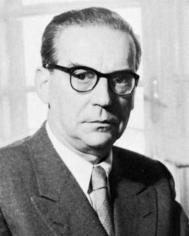Triton is the largest moon of the planet Neptune, discovered on October 10, 1846, by English astronomer William Lassell. It is the only large moon in the Solar System with a retrograde orbit, which is an orbit in the opposite direction to its planet's rotation. At 2,700 kilometres (1,700 mi) in diameter, it is the seventh-largest moon in the Solar System. Because of its retrograde orbit and composition similar to Pluto's, Triton is thought to have been captured from the Kuiper belt. Triton has a surface of mostly frozen nitrogen, a mostly water ice crust, an icy mantle and a substantial core of rock and metal. The core makes up two-thirds of its total mass. Triton has a mean density of 2.061 grams per cubic centimetre (0.0745 lb/cu in) and is composed of approximately 15–35% water ice.
Triton is one of the few moons in the Solar System known to be geologically active. As a consequence, its surface is relatively young, with a complex geological history revealed in intricate and mysterious cryovolcanic and tectonic terrains. Part of its crust is dotted with geysers thought to erupt nitrogen. Triton has a tenuous nitrogen atmosphere less than 1/70,000 the pressure of Earth's atmosphere at sea level.
Discovery and naming
The moon was discovered by British astronomer William Lassell on October 10, 1846, just 17 days after the discovery of Neptune.
A brewer by trade, Lassell began making mirrors for his amateur telescope in 1820. When John Herschel received news of Neptune's discovery, he wrote to Lassell suggesting he search for possible moons. Lassell did so and discovered Triton eight days later. Lassell also claimed to have discovered rings. Although Neptune was later confirmed to have rings, they are so faint and dark that it is doubted he actually saw them.
Triton is named after the Greek sea god Triton (Τρίτων), the son of Poseidon (the Greek god comparable to the Roman Neptune). The name was first proposed by Camille Flammarion in his 1880 book Astronomie Populaire, although it was not officially adopted until many decades later. Until the discovery of the second moon Nereid in 1949, Triton was commonly known as simply "the satellite of Neptune". Lassell did not name his own discovery, although he suggested names a few years after his subsequent discovery of an eighth moon of Saturn (Hyperion). The third and fourth moons of Uranus (Ariel and Umbriel), which Lassell discovered in 1851, were named by John Herschel.

